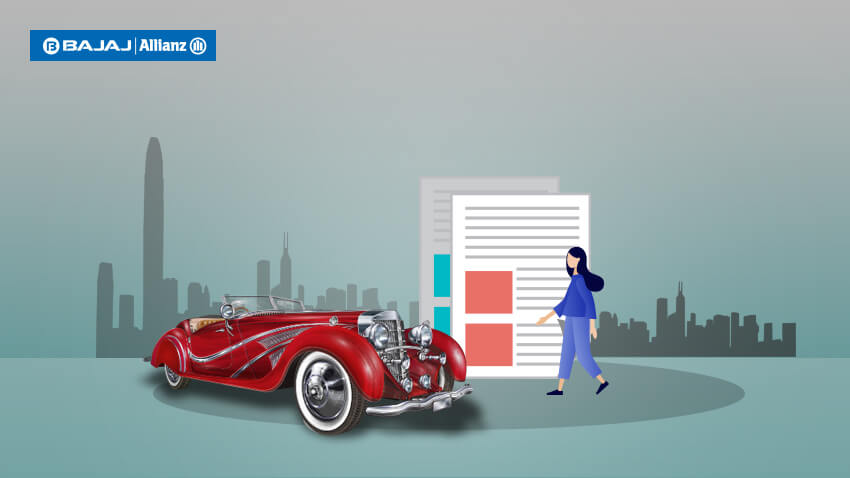Buy Policy: 1800-209-0144| Service: 1800-209-5858
 Service Chat: +91 75072 45858
Service Chat: +91 75072 45858

Vintage Cars: Prices, Age & Models in India
We ensure our vehicles not just because of the legal requirement but also because it spares your finances from taking a big hit in times of need. If we consider these things for a regular car, it is undoubtedly necessary for a classic or vintage car. If you often wonder what is the price of vintage car, then you also need to consider what it's repairs could cost. So if you hardly manage to maintain a regular motor car, definitely vintage vehicle is not your cup of tea.
Categories of old cars
A common question that any layman faces is how the cars are classified into categories? So the cars are ranked based on their year of manufacturing. The next immediate question is what year is a vintage car and what are the other categories? Let’s have a look.
Classic Cars: These cars were manufactured between 1940 and 1970. The classification can be based on various factors, manufacturing year being the most prominent of them. It is expected to be closer to its original design, specification, and features.
Vintage Cars: The cars that are manufactured between 1919 and 1925 at times, even in 1930, are classified as vintage cars. These are the oldest of the lot, a very few remaining in use. Modifications in design or features have little impact on the price of cars in this category.
Old cars insurance
You can get vintage car insurance online or offline, just like standard car insurance. Now every insurance company has its own set of guidelines in regards to the classification of cars, so it’s better to go through it thoroughly before finalizing the contract.
One more requirement that all the insurance companies have in common is that for you to buy vintage car insurance, it is compulsory for you to have a certificate by VCCCI, which is The Vintage and Classic Car Club of India as proof of your categorization.
The premium amount is not fixed as it is in the case of other regular car insurance online. The insurer will send an expert to have your car accessed. The surveyor considers what is the price of vintage car, what is the price of spare parts, whether they are available in India or are to be imported, what is the potential cost of repairs, etc., and then the report is prepared. This will be taken as a basis to decide the premium amount.
Factors that will affect the premium amount
Age
The age of the car has a direct relation to its maintenance costs. What year is a vintage car made in and how well it is maintained plays an essential role in deciding the premium amount.
Current value
If you want to know what is the price of vintage car, well, you can get the right amount of money if you sell it today in given circumstances. Vintage cars sell from somewhere around Rs 45000 to Rs 4.5 lakhs or even higher depending on the number of models remaining, the condition of the car, and other factors.
Kilometers driven
How many kilometers the car has run on the road is an essential factor as more and more use means more wear and tear. But very little help means higher maintenance. So it becomes critical to have a balance between both.
Cost of repair and spare parts
Many of these vintage and classic cars have no readily available spare parts, and if there are, they are costly. At times, they need to be imported. This becomes a high cost and hence is considered in deciding the car insurance premium amount.
How does regular motor car insurance differ from vintage car insurance?
You cannot expect a child to function in the same way as a grandparent. The same is the case in cars. You cannot have the same functioning for insurance of regular and vintage vehicles. The only way both the insurance policies differ is that in standard motor insurance, Insured Declared Value or IDV is decided by deducting the depreciation value from its price. Under vintage car insurance, you have a surveyor to access the Insured Declared Value(IDV).
What are the points to be considered while choosing a vintage car insurance policy?
There is nothing much specific while choosing a vintage car policy except that you should always choose a policy with IDV close to your car’s present value.
Also, it is expected that such cars are often taken to exhibitions or other public events; it is necessary to have their insurance separately if it is not covered under regular vintage car insurance.
Frequently Asked Questions
Is third-party insurance necessary for vintage cars also?
Yes, it is necessary to have third-party insurance for all cars, including vintage cars.
Which vintage car policy is right for my car?
The policy that has the IDV nearest to the present value of your car is best suited for you.

